Journal of Proteomics & Bioinformatics
Open Access
ISSN: 0974-276X
ISSN: 0974-276X
Review Article - (2023)Volume 16, Issue 3
Every day data is generated from various applications, for example, from the Web and medical healthcare sectors. Data science and machine learning algorithms are used in clinical data (i.e., electronic health records, medical reports, treatments) to analyze reports The genome is all the genetic material of an organism and is made from Deoxyribonucleic Acid (DNA). Genome studies include structuring, sequencing, molecular bioinformatics and understanding the variants which help to provide cures and medical inventions for various diseases. Genome analysis issues are encountered in drug, electronic healthcare, gene sequencing, analysis and prediction systems. Protein structure detection and prediction of the gene are equally important. Knowledge of genes is used in the development of medicines. Genome study and data science help in biotechnology, antibiotic resistance and bioweapons creations. Healthcare data, management and monitoring of patient, healthcare tracking, diagnosis, and treatment of diseases and preventive recommendations are significant for various diseases.
Artificial intelligence; Biochemistry; Bioinformatics; Data science; Genomes; Medical applications
Data science in healthcare
Every day data is generated from a variety of applications, for example, weather forecasting, health care, etc. Big data focuses on solving, volume, variety, velocity which include electronic health records, healthcare sector information, trust technology, where predictions outcome decisions made by clinicians, doctors use to improve health predictive analysis. Volume transactions, tables, a variety of data, structures, semi-structured and unstructured data, velocity (i.e., real-time, streams), and veracity (i.e., origin, availability, accountability) of big data are the 4 Vs in healthcare. Examples include the treatment of cancer, developing genomic medicine, monitoring of patients, healthcare intelligence, and the prevention and detection of diseases.
Data science is a popular statistical technique, providing analytics for various datasets. For example, we can apply machine learning algorithms to clinical data and electronic health records to analyze and predict patterns. Data science is an umbrella of statistics, machine learning, data management and analytics. For example, genomics data and features from the genome sequencing. Data have volume velocity and variety to evaluate the health data in genome sequencing relations and require tools to analyze the data. Data science in genomics is helpful in individual information, genomic calculations, associations, and sharing information for global genome health sectors. Genomics data are the most important biological science discipline connected to data science to investigate information in healthcare sectors. Data science methods use accurate diagnosis to enable medical treatment for various diseases, including biomedical applications for complex human diseases. With a deep learning medical tool, X-rays (lung), a radiologist can identify cancers and tumors in an early stage. The Freenome Tool is used to detect cancers using artificial intelligence. In general medical science, researchers contribute papers that have collected information related to health.
Data science is used to solve problems in bioinformatics, biomedical research, big data management analysis, critical varieties of information, input data, procedures for partitioning, organizing, storage, and accessing valuable data on molecular biology, hospital consider support big data services which assist for large medical data records, development cost, pharmaceutical, health analysis, patient communication, and other data-mining techniques. Big data includes data science advancements in technology and research in biomedical applications. Automated tools are applied for clinical data analytics for personalized medicines, for example, biomedical research, personalized medicines, data modeling, optimization, and analysis. Data are complex, for example, real-time data can reach 10 petabytes; therefore, it is complex to analyze the trillions of gigabytes of information generated daily. For health information, symptoms, Electronic Health Records (EHRs), DNA, Ribonucleic Acid (RNA) and genome data sequencing are required. Data management, clinical data, treatment, and medicines are included. Data analytics and interpretation by applying regression, clustering, and classification methods are used to analyze data.
Genomics
Genomics includes the high-quality comprehensive sequence of the human genome. It is a set of DNA that includes the identification and quantification of an organism’s genes and their interactions and influence on that organism. Fredrick Sanger played a significant role in the development of DNA sequencing that enabled the study of the genome sequence. In 1975, Alan Coulson published an article about DNA, and in 1977 the fully sequenced DNA-based genome was revealed. DNA sequencing, mapping, and storage in bioinformatic analyses will be extensively used in future research. Allan Maxam and Walter Gilbert of Harvard University independently developed DNA sequencing. In 1980, Gilbert and Sanger received the Nobel Prize in Chemistry Nomenclature.
Differences between individuals is due to DNA is transformed into RNA. RNA is translated into the amino acid sequence which produces protein complement (i.e., proteomics). DNA can be in any of three forms such as A-DNA which is a double helix structure, B-DNA is a right-handed helix structure, and Z-DNA is left-handed DNA consisting of a double helix zigzag pattern. Data is stored as biological information. RNA is a polymer structure molecule that has an essential biological role in coding, decoding and expression of genes and it plays a significant part in cells in biological reactions by controlling gene expression. Proteins are large biomolecules which have one or more long chains of amino acid residues. Proteins perform functions within organisms, including catalyzing metabolic reactions, DNA replication, providing cell structure organisms, and transporting molecules from one location to another. The proteins interact with other types of proteins, carbohydrates, and DNA [1].
Figure 1 shows DNA which maintains protein-encoding information and RNA that uses the information to enable a cell to synthesize a particular protein. DNA has a double-stranded and RNA a single-standard structure. RNA uses the information to enable cells to synthesize a particular protein (Figure 1).
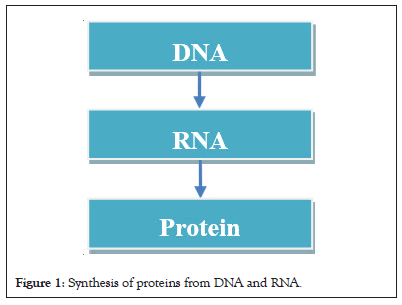
Figure 1: Synthesis of proteins from DNA and RNA.
DNA vaccinations are more effective for infectious and malignant diseases. mRNA vaccines have been used for the treatment of the COVID-19 virus, with vaccines being supplied by Pfizer and Moderna. A genome is a material organism consisting of DNA or RNA, both genes coding, DNA. Genes are made from DNA and consist of proteins and is the sum of the total organism. Genomes are very important, with each DNA cell containing approximately three billion DNA base pairs. DNA contains information about the entire body. No two humans are genetically identical; each person’s genome is slightly different from all others.
Woo, et al. [2] studied the corona virus genomics family of viruses, with the largest genome of RNA viruses. They carried out a comparison of corona virus, replication, and recombination analysis. Kahn [3] studied raw sequencing data of genomics, store terabytes, and analyzed and addressed data security, access, and advancements. Gottesman, et al. [4] studied electronic medical records, genome networks, development methods, and best practices. Information, genome study, genomic medicine, and policies. Manolio TA, et al. [5] studied genomics to provide clinical care using genome variants. Research groups identify infrastructure, framework, investigation programs medical reimbursement. Institutions have engaged in the use of genomic information for clinical care. Katsanis SH, et al. [6] studied genomic technology, detect variation, and scientists interpret and handle, generate sequencing, in clinical molecular diagnostics. Redekop, et al. [7] studied framework term personalized medicine, clinical medicine has diagnosis method, test, medicine actions to predict the drug response. Adequate treatment responses improve the health of patients. Diagnostic test. Merelli I, et al. [8] studied biomedical research and healthcare systems and demanded the most urgent solutions from the research sciences. Healthcare interaction, biomedical data, and personalized medicine promote better treatment through the analysis and interpretation of big data and molecular biology. Understanding of disease requires better diagnostics, use of big data, bioinformatics, high-performance computing solutions, computational biology, and biomedical healthcare.
Plomin R, et al. [9] studied future research into genomics, including genome sequencing, identifying all DNA sequencing variants and DNA variants, to predict genetic risk and diseases. Donoghue IOS, et al. [10] studied the complexity of biomedical data, including access, communication, and clinical processes. High visualization representing, data visualization is required. Biomedical research, three-dimensional genomics, RNA sequencing, protein structure, etc., are useful for the treatment of patients in hospitals based on clinical diagnostics and reports. Katsanis SH, et al. [6] studied molecular and genomic technologies, and also genetic testing in future clinical analyses. Genetic variation, patients, high accuracy, molecular technology to continue to access next-generation capabilities and useful for future genetic medicine. Cavalli-Sforza [11] studied human genetic variation, Human Genome Diversity Project (HGDP), understanding patterns, variation, and causes, provide information biomedical data. Tresp V, et al. [12] studied digitization and data analytics used in healthcare. Treatment, network of healthcare, goal is an effective treatment, analyze the data, healthcare monitoring by medical treatment. Anagnostopoulos I, et al. [13] studied information data being generated on all devices every day. Handling the large heterogeneous data and recommend solutions in multidisciplinary research investigations. Sivarajah U, et al. [14] studied big data challenges in critical analysis, big data tools help decision-making big data methods, identify and explore patterns with the use of technology in resource management. Ristevski B, et al. [15] studied survey big data in healthcare. The big data analytics in medicine (genomics, proteomics), biometric data and data processing software. Jiang F, et al. [16] studied healthcare data, the use of Artificial Intelligence (AI), for clinical support, major disease use of AI tools to treat cancer, cardiology, and neurology applications. AI is used for early detection of diseases, treatment, and prediction. Adam NR, et al. [17] studied healthcare development, patients, tracking patients, health records and patient self-tracking in biomedical sciences. Wu PY, et al. [18] studied healthcare application electronic healthcare records, which will improve healthcare quality, treatment, and monitoring. Biomedical, data scientist, medical reprehensive, speedup research in medicines and patient treatment.
Geissmann Q, et al. [19] studied automated methods in which biologists analyze data in an efficient flexible manner. For example, rethomics offers computational solutions, storing, computation and visualizing a large amount of behavioral data. Some studied biomedical data by applying big data tools and data analytics in various sectors like medical healthcare for personalized medicines. Navarro FC, et al. [20] studied data science used for large data, to conceptualize several subdomains. For example, in the genomics application, data analyzed relevant gnome nature DNA. Zhang C, et al. [21] studied RNA-based technology and gave the improvement for therapeutic vaccines. Clinical trials show that mRNA vaccines are safe and will give long-lasting immune response for animals and humans in various infectious diseases. Hulsen T, et al. [22] studied big data is used in medical research, where medical data. Data collection, storage, cleaning, processing, and interpretations. Kumar S, et al. [23] studied big data analytics used in genome, EHRs and clinical decisions. Big data tools are used to handle a large amount of medical data. Dash S, et al. [24] studied big data and computing solutions in biomedical, healthcare data in modern healthcare organizations helpful in medical therapies and personalized medicine. Nguyen TT, et al. [25] studied COVID-19 pandemic and Artificial Intelligence (AI) is applied in medical image processing and data analytics. AI applications are very much useful for future applications in the medical health sector. Tyler J, et al. [26] studied personalized real-time medicine with wearable sensors and predictive models continuously measure physiological data, for example, identify the stage of disease, with wearable biomarker data with personalized real-time medicine.
Rieke N, et al. [27] studied statistical models in medical data and healthcare systems. Basu K, et al. [28] studied AI used in medical science, applications such as diagnosing patients, drugs, medicines, communication to patients and doctors, medical documents, prescriptions, understanding the process, and system automation. High-quality comprehensive sequence of human genome is an organism that has a set of DNA that identification and quantification of organism genes and their interactions and influence on an organism.
Relation between genomics and data science
Biomedical data, in health care, communication, and all diagnoses not recognized incents are major causes of deaths. Data reading, automatic analysis (i.e., machine learning, modeling, clustering, and classification) find all relevant data and analysis. The goal of visualization, finding the pattering that affect and find the causes of illness or diseases in clinical data.
Read the data, store the data, analyze the data, visualization and reporting communication. Data visualization principles are data volume, complexity, biomedical dataset resources, data integration and visualization. Large volumes of data stored in the server, data formats like text, image, video, audio, etc. and visualization of data specific targeted strategies. The complexity of data is multivariate, multiscale, highly interconnected with specific conditions. Data visualization resources like excel, MATLAB, communication, utilities, general resources, etc. Data visualization is most important for example bar charts, graphs, etc. Biomedical data visualizations are the integration of data familiar strategies, to read, load need data. DNA sequencing, visualization, navigation genome, user interface, features. etc., are seen in clinical data visualization.
Genomic techniques are the structure of molecules. For example, RNA sequence, design, analysis, optical illusions, visualizations of biomedical datasets, protein structure, RNA, DNA structure with 3D representations. Visualization of molecular structure in various formats represents events underlying health and disease, understand and analyze the relevant significant patterns. For example, X-ray, Magnetic Resonance Imaging (MRI) scan, Computerized Tomography (CT) scan, augmented reality imaging etc. Visualization and communication tools used are animation and videos, scientific communications, scientific videos, real live data, accurately measure data, animations videos to understand the diseases in perspective of highlighting visualization tools, biological data, biomedical communication, animation. Tools play the most significant role, in understanding and learning through visualizations. Human genome sequence with high quality comprehensive has doubled helical structure of DNA. Determining the structure and genetic code, DNA sequencing, new research, and experimental technologies is done. Technological advancements, the public data in daily life, genomic approach share the community, important new dimensional biological and biomedical research through biochemistry and bioinformatics. Genome sequence information is used in development function, in new field identification of genes and responsible for diseases, treatment and medicine. DNA samples that is associated with phenotypes and DNA sequencing machine. Genome functions as a subsequent genome is sequenced. Clinical diagnosis is done by gene-based pre-symptomatic prediction and illness, drug response and treatment. The study, ethical, law social, scientific, analysis protection is required for data due to misuse genetic discrimination. Analysis, technological and physical genetic mapping of genomes is done for sequencing.
According to Sanger sequencing methods are reaction mixture (prime DNA template, DNA polymerase, etc.,), primer elongation and chain termination and capillary gel separation of DNA fragments and detection of fluorochromes and computational sequence analysis (Figure 2).
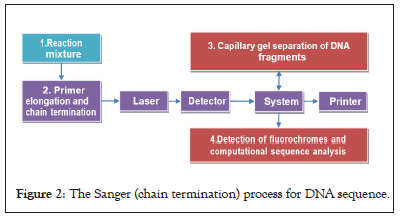
Figure 2: The Sanger (chain termination) process for DNA sequence.
All living organism consists of own genome. Every genome has all information requires to function. Each genome consists of information required to construct and maintain that organism for entire period of its life. Genome helps to develop a single cell into the person; it helps how growth organ in its jobs, and when the cell gets damaged, and it are unique. Genome in health to analyze the structure, for making health decisions like medicine, vaccine, etc. Genome structure, genome work, genetic diseases, genetic testing and genome impact are required for everyday life. National Human Genome Research Institute (NHGRI) grant fund for collaborations with government scientists, private and public institutions id going on. Identify the genomic, under human health and disease, and helps that genomics to improve patient care and treatment in medicines of cancer genetics and corona genetics.
Genomic information as a clinical research in biological, the disease more effectively diagnoses, prevents and used for treatment of patients. Genomic medicine is the clinical analysis for disease stages and making decisions and outcome results of health. Genome medicines are most useful in infectious diseases like COVID-19, cancer, etc. For chronic diseases, gene diseases impact not only the patient but family health history. Understanding the diseases and know the family health track. The health of a person is determined by the sequence of genes, variants and health problems such as tumors, cancers, COVID-19, etc. Risks of several diseases even the patient loses their life. Vaccination, medicines, and treatment surgery, and others is done. Genome is a sequence of an individual ability to identify a sequence of DNA. DNA tests, clinical tests, reporting, and analysis of the reports find the disease positive or negative. For example, testing MRI, radiology, and other testing methods.
Clinical reports find a person's positive or negative decision. Improve genome testing will make health decision risks and find the accurate variant in a sequence of genome data. NHGRI, understand, find and analyze and improve treatment, medicines, and genome testing. Genome services includes persons finds secondary clinical recommendations to assess the risk of patient; person share and finds health history of family members; if anyone in the family diagnosed the problem symptoms disease related with the same problem. Hospitals, healthcare professionals' doctors, communicate patients' secondary findings for treatment report. Genome sequence suggestions medicines and take actions to assist patients to improve health in early-stage and save the lives. Genome information improves human health and specific disease an identified. Biometrical research, Genome research, helps all areas of human biology. Six important elements of three areas are technology development, computational biology, education, training, social implications, and ethical, legal. Genome biology, human sequencing of genome organism, functional information (biology, bioinformatics) is the applications. Development of a comprehensive catalog for all components encoded human genome.
Identity the structural components and functional components encoded human genome. Genome structure is complex to understand. DNA sequence, identification, monitoring genome expression, improves quality, correlations genetic variation, analysis, link molecular profiles to biology, identification and analysis of functional genome sequence. All the genomes functional pathways is to monitor all proteins simultaneously. Computational biology, data generation, computation, components, protein to protein interactions, software modules, methods, factors genome environment interaction.
Genomes will participate in complex interactions and pathways also the networks and molecular systems that working cells and tissues. Molecular biology, genomes, genetic organisms analyze to find the bacteria, yeast, etc. The genome is a complex organism. Biological, network, molecular systems, cell types, methodology, and monitors activities. To develop an understanding of the genome, the genetic correlation for the variant of DNA sequence challenge, understand variation across species to understand. DNA mutation repairs the environmental factors.
Scientific, medical, clinical persons require training to understand the concept of genomes. The training requires two groups of people, those who have interdisciplinary skills, multidisciplinary knowledge is required to understand the concepts for example (computer science, biology, physics, chemistry, and others), different perceptive; domain- specific experts to do research and development. Researchers, the public hospitals providing treatment to patients with gene information variants. Data to be accessed by everyone who requires it. Intellectual property to maximize the benefit for public health. For example, COVID-19 vaccination medicine is available to those who require needy without commercialization of medicine rights due to large, affected people around the world, the policies, and licenses for critical viral infectious diseases. Human genome sequence leads to improvement of health and avoid harms, identifies the genome (health, disease, and environmental factors). Apply the genome sequence to find the method of medicine and suggest the treatment and early detection of diseases, drug detection, drug response (clinical analysis) and accurate predictions by molecular classification.
A strategic method to identify genetic contributions disease and response is developed during the drug response and usage. Factors can influence genetic factors, non-genetic factors, health reasons, identify, quantify the environmental resources and technical advancement tools that help to treat the diseases. Ethical, legal and social implications are for research of genomes and its applications impact, social, policymakers, public, patient impact. Develop model genome, tools, technology, and education. Gene variants and continue good health resistance to diseases, prediction of diseases by genome sequence, molecular taxonomy. Prediction diseases drug response stages, food (diet), exercise and lifestyle will improve the health. Public health depends on effective education, model genome, health professional, hospitals, doctors, staff, clinical diagnose and awareness in the society related to infectious diseases. Powerful technology in public, private and Government funding for Research and development of new medicines for critical diseases such as cancer, etc. Research and development of genome and biological tools helps to improve health. Health focus on society analyzes the impact on genes, policies and consequences technological advancement in critical importance and genome for biomedical research helps to optimize and efficient utilization of resources.
Technology development can be done by critical importance and genome for biomedical research, DNA sequencing, genome coding sequencing, analyze tools (molecular, genome, protein, DNA, RNA, etc.) and network and pathways. Biomedical research communication of various people and ethical legal, social research. Genome research is the scientific opportunity, studying specific disease treatment and awareness.
Data science in health care
Data science and analytics: It includes general biomedical data, biomarker identification, genomic data, electronic medical records and genomics, corona virus genomics and bioinformatics analysis, innovation and development of medicine, detecting novel disease, mutations, laboratory, clinical analysis, data science and database.
General biomedical data: Identify a subset of data and its characteristics, feature selection, feature extraction. Feature selection uses filtering, embedded systems and feature extraction follows the principle of component analysis, support vector machines use of training data and testing data and data preprocessing, high data summarizes data.
Biomarker identification: Collecting samples from different environments (i.e., disease vs. non-disease) or before vs. after treatment, identifies biomarkers, which significantly helpful treatment and analysis. Biomedical data analysis is based on feature selection and correlation. EHR preprocessing, missing values, data quality, the selected data, features, patient information, (i.e., condition, outcome, clinical data), and estimate the relationship between independent variables (i.e., features), dependent variables (i.e., generalize the model to statistical models to assign new observations). EHRs, diagnosis, treatment and results chronologically, medical records find the relationships, data mining methods applied, rule-based techniques applied in treatments and outcomes. Apply data mining for large dataset repositories (from i.e., World Health Organization (WHO)), biomedical, National health sectors data, in biomedical informatics, clinical and treatment information. In recent advancements, in technologies for large datasets in biological complex phenotypes data, by use of data analytics tools to analyze the data. Biological data, animal behavior, genetics, toward data scientist’s computational quality data for analyzing and learning and predicting patterns which will be most useful in medical healthcare systems. Biology, bioinformatics, standardizing data, feature set, formal description, for example, the behavior of fruit flies (i.e., by considering rhythm), design, and implementation of the model, and apply data analytics methods to find the relevant patterns of biological datasets.
Genomic data: Genome study humans have inherited genomes. Genome sequencing, storage, and analysis, sequence genome, sequenced extend and report literature, output information and storage capacity, computation process of images real-time analysis, precision, score and optimize the storage, patient human data and security, safeguard all access genomic data privacy and security, genetic information new data minimize data storage- sequence, genome sequence and clinical understanding of genome data, complex tissues affecting humans or not (human origin for example bacteria, virus, etc.). Bioinformatics demands data more dynamic, for example DNA data research, Electronic Medical Reports (EMRs), capture genomic data apply sequencing information, diagnose disease, apply sequencing and treatment with the help of tools and analysis. The future tracking data, genomic data, clinical applications around positive or negative controls and stored in the medical record and biological and medical sciences with advanced sequencing methods.
Electronic medical records and genomics: Personalized medicine, personalized predictive, preventive, and particularity medicine (P4 medicine), proactive medicine, reduced healthcare expenditure, and improve patient health by treatment. Collection, management is stored, sharing and analysis, data mining, integration, and visualization techniques. Using of model, analysis and validations, biometrics, healthcare information, imaging information, and sensor information. Figure 3 describes integrated analysis improvement, take virus samples, with identifying types with molecular changes and apply data analysis and find the evaluation reports.
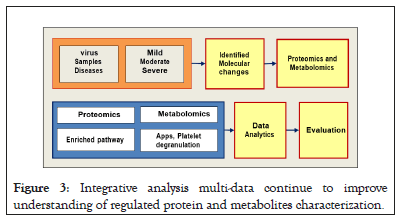
Figure 3: Integrative analysis multi-data continue to improve understanding of regulated protein and metabolites characterization.
Data, EHR data, apply data analytics to find molecular profiles, genomic, DNA, RNA, metabolize, provide knowledge-related health data. Analyzing helps to analyze EHR and suggesting, prescriptions of better medical based on data reports. Analysis helps EHR and features for suggesting, processing, identification, modeling, pre-processing, missing data and apply data analytics methods to predict the outcomes that help to preventive measures to be taken by patients (Figure 3).
The samples collected from patients with the type of diseases mild, moderate, and severe identified proteomics and metabolomics during data analytics finally evaluation of the type of disease will be classified into mild, moderate and severe based on data analytics and evaluation of medical reports.
Electronic Medical Records (EMRs) and genomics, NHGRI funded institute with development and utilization of EMR tools in genome research. Data EMR large number of unique records, cases collected from network sites. eMerge has three major works such as get electronic phenotyping from EMR data, study genome-wide association, ethical, legal and social development of phenotype algorithm, information individual data, best practices, the privacy of participants. The eMERGE network, clinic data collected, and EMR data extracted merged and applied phenotype's algorithm for existing clinical data to find any novel genome variant and display the result of the genome sequence (new variant). Figure 4 describes genome analysis model, take EMR data, extraction by applying algorithms, analyze with existing data with new variant gnome type and find the new reports (Figure 4).
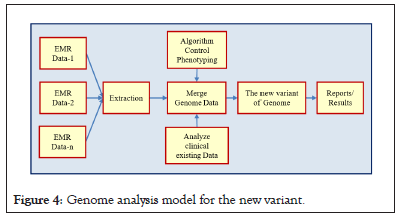
Figure 4: Genome analysis model for the new variant.
The EMI record consists of institution, name of biorepository, model, samples and donor EMI, etc. Goals identify EMIS, develop an algorithm for phenotyping, success network and study implementing genomic medicine using EMR. In critical goals, the phenotyping workgroup is responsible for the creation of phenotype algorithms, validation and execution of algorithms across the network. The developed Phenotype Knowledge Base (PheKB) is a repository phenotype algorithm for the user to read, upload, search and suggest feedback algorithm to upload a variety of documents. The genomic workgroup is imputation to find network-wide genetic studies. Genetic imputation pipeline is creating a single unified standard data for all individual, genotype process samples. Genetic mutations and EMR data are available to find the genetic diseases and disorder of healthy organs. Phenotype, easily screened and treated, cost-effective genetic screening, consent collection, education regulation, and consultation. Integration workgroup by clinical decision support systems through EMIRs and collaboration with external groups, provide valuable resources. For reaching goals and activities, generalize the framework and return result.
Genomics and informatics, EMR is a cost-effective tool. The clinical is through EMR will improve the healthcare for primary and secondary prevention and understanding disease. Exponential increasing the corona disease is vanished by vaccination process completed and herd immunity will increase as a result is linear.
Corona virus genomics and bioinformatics analysis: Corona virus (COVID-19), a novel virus that originated in Wuhan, China detected and confirmed many deaths. Many medical research investigations to treat medicines, while developed vaccines to prevent the virus. Clinical analysis such as real-time Reverse Transcriptase Polymerase Chain Reaction (RTPCR), X-ray, CT Scan, and other methods to identify the corona virus. COVID-19 pandemic, deep learning, medical image processing, scientific methods, SARS epidemic, initially COVID-19 virus found in Wuhan, China. Later the tremendous increasing the number of corona viruses discovered worldwide as infectious disease, the genomes of corona virus, bioinformatic analysis on the family of RNA virus. The corona virus groups are into four alpha corona virus, beta, and gamma with beta corona virus having subgroups A, B, C, and D. The genomic sequence is using RNA from clinical specimens.
Corona virus is an RNA virus; the genome has extra holding and modifying genes. The gene has five replicas such as ORFLab, spike, envelop, membrane and nucleocapsid-3 (n). The sequence RNA replication is a result of the high frequency of homologous RNA recombination of corona virus.
• The proteins are encoded by ORF1ab of the corona virus genome.
• Haemagglutinin esterase subgroup A, (HE hemagglutinin-esterase) gene that are encoded with a glycoprotein with neuraminate.
• The S proteins are controllable for the spike surface of corona virus.
• E and M proteins are small transmembrane proteins, which are associated with the envelope of all corona viruses.
• It is like hoard proteins that are encoded by ORFlab, N gene for another target phylogenetic analysis.
• Other small ORFS are the various conserved genes.
Monoclonal antibody treatment used for corona treatment, if we do it in early stage, the virus blocking and results in non-replication of the virus but it is costly, in this treatment the doctors find the health of patients. This is not suitable for severe affected. Antibodies generated by immune therapy, sometimes get side effects, allergy, etc.
RNA replication, through the virus, has a high frequency of homologous RNA genomics and bioinformatics analysis, corona virus genome, sequence and another corona virus database. Increase number of corona virus and species and genomes data retrieval, data sequencing, gene identification, bioinformatics tools analyze the family of corona virus. Data science is useful to analyze and predict the results.
Innovation and development of medicine: In clinical care, many optimistic scenarios use genome information. This genomics is used for drug inventions and medicines. Genotypic information is useful in clinical care to treat complex diseases. Multiple variants can be identified in clinical care. Genomic medicine, detection of genomic variant mutation, tumor detection, treatment. High mutation risk to identify, testing patients to identify, testing up experiments. Family health history information, individual patients report. Collect and electronic data, for example, tumor, cancer, etc. Genomic medicine data, tools are useful. The strongest clinical evidence is placed in EMR. Proactive genotyping variants, testing embedded systems. For example, COVID-19, the pandemic situation for people to corona tracing, testing and treatment and isolation (Figure 5).
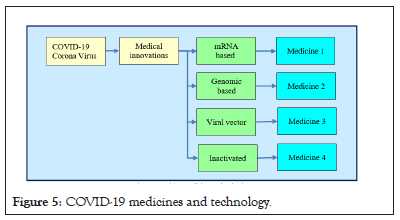
Figure 5: COVID-19 medicines and technology.
To detect novel disease, mutations, laboratory, clinical analysis data science: Based on genomic variant research and invention the medicine, genomic medicine, trials with animals finds the results, medical treatment and cure the disease with side effects and risks. Project Pharma companies, health care institutions after medicine, improve patient health care, evidence shows it can improve resource utility, risk analysis, and side effects and correlations, medical inventions.
For example, COVID-19 medicine has samples, medical innovation based on various technology and development of medicines. Based on guidelines by International WHO sequencing, genome information, EMR Institutional Committee, with senior members, the project for the development of Corona virus, with Institutions, funding, develop medicine and environment with stakeholders. Clinical acceptance, report submission, government, judicial policy and guidelines, ethics used to invent the medicine genome medicine research rapid development and cost-effective solutions, with use of manpower, equipment, quality control, clinical laboratory, staff with interdisciplinary, discussions with a framework, medical applications. Figure 6 describes knowledge data for genome variants and relations medicines and services. Retrieve the knowledge, look up sequence in clinical data find the medicine and suggest the services based on report (Figure 6).
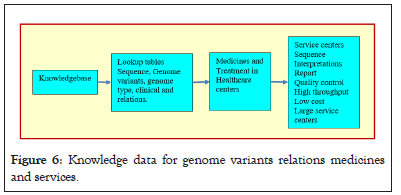
Figure 6: Knowledge data for genome variants relations medicines and services.
Database: All the available sequences to find the new variant. Training programs to physicians' pharmacies, nurses, and others, service video, social medical approaches to education and awareness about disease severity. Bioinformatics, analysis tools, identify specific variants, test cells, RNA testing, and genome sequencing and find cause for diseases. Best practices to be followed, defenses, collection, implementation, process, test, and outcomes.
Source plan information for millions of records required to analyze. The clinical decision requires data science. Center of Disease Control and Prevention (CDCP), next generation to develop genomic medicine, with research, clinicians, doctors, scientists, chemists, biologists and pathologists’ multidisciplinary people are involving the development of medicines. A specific innovation for most critical diseases is due to genomic medicines and appropriate actions, model, database, CMR records. Considerations evidence for implementing genome medicine to ensure high priority healthcare targets to minimize the risk evidence to justify the risk, analysis, assessment and outcome.
Genomic research information, appropriate results and report finding EMR. Best practices for complex task implementation. Genetic information through EMR is by the use of algorithms to make an efficient decision. Tools to minimize time and improve accuracy. Follow the best practices, conform to develop genomics standard sequence, clinical applications of medicine, and analyze the results. Physicians, clinicians, doctors with genome medicine, permission, approach approval, analyze testing and reporting. Genome medical, genome activities, genome typing and genome medical activities. Family members are responsible and improve health, to minimize the risk by easy detect and treatment for chronic diseases.
Figure 7 shows the development of medicine at various stages in Pharma companies. All medical records, group of patients, doctors, clinicians, specific educational needs to conduct genetic medicine. Conducting the educational campaign for patients, clinicians, doctors, nurses and conducts the survey information about a new medicine. The survey interprets and resolves the issues. By reports and suggestions, clinical supervision is required for medicine. Quality of samples is in clinical sequence. The clinical sequence of all evidence in genome testing, high-level institutions bio-repositions to efficient and easy access to all the required data from EMR records. Establish genome testing, rapid diagnostic the consumer, testing, identify if any new variant, clinical analysis Recommendations, and interventions with low-risk inventions, EMR genome data. The diseases can be symptomatic, and asymptomatic. The infrastructure is required to develop the medicine. Genome medicine, trails, with animals. Find the medical treatment, if any side effects or risks and building infrastructure knowledge base. The development of medicines involves collecting the literature, comprehensive review, and recommendations and experts for clinical experiments in the genome sequence.
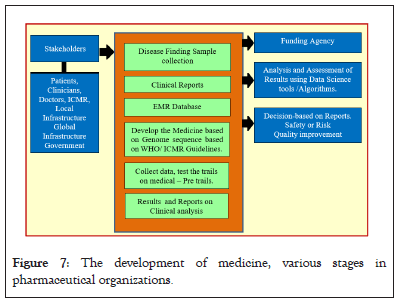
Figure 7: The development of medicine, various stages in pharmaceutical organizations.
The clinical, testing results and recommendations are based on monitoring data evolution and future efforts. Finally, with genome sequence, disease and inventing medicine for high-risk diseases for new variants. With the collaboration of new institutions, following best practices, systematic approach, DNA, RNA, protein, sequence applications in genome. Vaccination is the most important and successful medical method for disease prevention and control. Use vaccines large people for various infectious diseases in treatment and preventions. Vaccination will improve the health immunization and live microorganism and stimulated potent T follicular helper, and cell immunization response, vaccine formula inventions, vaccine clinical trials, vaccine approvals, manufacturing vaccines with safe and time-saving and large scale sectors, minimizing risk for infectious diseases, for example, SARS-CoV-2. The Table 1 describes the companies and names of corona (COVID-19) vaccines available in the world (Figure 7).
| S. No. | Vaccine | Type | Doses | Efficacy | Developed by | Manufacturing company in country |
|---|---|---|---|---|---|---|
| 1 | Pfizer/BioNtech | mRNA | 2 | 90% to 95% | BioNTech, a German company, developed and collaborated with Pfizer US | USA |
| 2 | Moderna | mRNA | 2 | 90% to 94% | National Institute of Allergy and Infectious Diseases | USA |
| 3 | Jhonson and Jhonson Janssen | Viral vector | 1 | 70% to 85% | Janssen Vaccines in Leiden, Netherlands, and collaborated with American company Johnson and Johnson | USA |
| Janssen/Ad26.COV 2.S | ||||||
| 4 | SII/Covishield and AstraZeneca/AZD1222 | Viral vector | 2 | 76% to 90% | Developed by Oxford University and AstraZeneca | UK |
| 5 | Sputnik V | Viral vector | 2 | 85% to 90% | Gamaleya Research Institute of Epidemiology and Microbiology, Russia | Russia |
| 6 | Sinovac CaronaVac Sinopharm | Inactivated virus | 2 | 70% to 90% | Chinese company Sinovac Biotech | China |
| 7 | Novavax | Protein-based | 2 | 85% to 89% | American Biotechnology company based in Gaithersburg, Maryland | US |
| 8 | Covaxin | Inactivated | 2 | 70% to 80% | Bharat Biotech in collaboration with the Indian Council of Medical Research. | India |
Table 1: SARS-CoV-2 vaccines available in the world.
mRNA vaccine genome is based on genome consisting of all genes RNA replication, where structural protein sequence is replaced with the gene of interest, resulting genomes as replicons. mRNA vaccines are crucial to find the kinetics and magnitude of antigen expression to immunize response. National Human Genome Research Institute, the new research will continue new insight of genetic variants diseases and maximum benefits and minimize the risks. Patients and stakeholders in health care application. Genome sequence transformation, diagnosis, sequencing, diagnose and genome technology, testing mutations gonotoconts as genotypes, karyotypes, etc. Sequencing access, regularity, clinical analysis, screening technology in genetic variation. Patients collected sample data and test in clinical labs molecular diagnosis and report the results. Genome sequencing is transforming molecular technology, efficient and screening, analysis, Major interpretive analysis, interpretations, next-generation, sequencing, genetic testing (Table 1).
Figure 8 describes that genetic testing is useful for rare disorders and complex diseases, genetic testing, genome analysis for finding mutations, genetics factors, related to health planning. Patient data by genetic diagnosis, clinical molecular diagnosis and detecting the variants. Microbiology, genetic testing, clinical features, sequencing, and diagnosis. Specific genes high-quality molecular diagnosis, pre-symptomatic testing to find the diseases like cancer, cardiac problems, rental and neurological disorder. Identify load of patients and disease status, detecting the variations by chemistry, micro scoping detections, genome arrangements testing the patients. NGS uses parallel sequencing, many genes, clinical sensitivity, coding, lesion, high-quality sequence from humans, and clinical expectations. Genetic testing is integrated into medical records. Genome data, observations, and biometrics clinical data cause the disease variants, clinical genetic testing diagnosis such as disease cause, sequence variation (i.e., disorder of disease gene and cause sequence variation. Sequence variation cause of disease to find in clinical presentation, variant, frequency, clinical findings, find clinical mutation to be considered proactive drug response. Molecular diagnosis, recognize thousands of variants of each patient for specific variant family members examining in computational process algorithm. Variant interpretations, genetic testing, privacy secrecy, policy standards (regular) quality standard, genomics sequencing, genetic service and interpretations. Genetic sequencing, patients, health care data, genetic testing, high validity healthcare, sequencing, genetic architecture mutations in biological functions clinical information. Genetic testing, high validity healthcare, sequencing, Genetic architecture, mutations in biological functions clinical information (Figure 8).
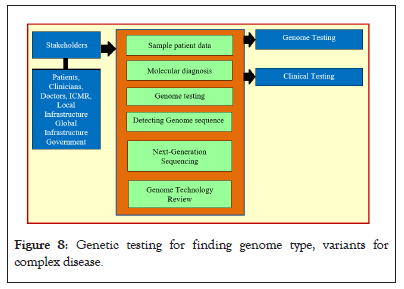
Figure 8: Genetic testing for finding genome type, variants for complex disease.
Framework, personalized medicine, clinical medicine, diagnoses medicines, test predictions, drug response, personalized medicine 100% safe. Risk of diseases in future for example cancer. Medical decision making predict treatment predicts disease and improves the health Clinical questions, risk disease, future diagnosis, respond treatment monitoring surveillance. Type of technology, medical history, examination, tests, reports, clinical reports, and cause genome sequences. Diseases treating by drug, surgery, maximize the safety. PCR testing, MRI scan, CT scan, antigen-based test to find the SARs-Cov2 disease in clinical analysis. Treatment, monitoring, and surveillance, chronic hepatitis, treatment viral diseases and RNA, molecular, biological, drug response treatment. Personalized medicine, optimize the use of medicine to improve health.
Healthcare management
Information is the most important and significant for organizations to make the best decisions. The current technological advancements, in health advances generating more data, defining data, data science observations deals with data management and analysis for healthcare sector complex data impact our daily lives. Across the globe, analyzing, management, machine learning and artificial intelligence techniques. Electronic health record, including medical imaging, environmental, social data.
Figure 8 describes data analytics and data warehousing model collecting the data store, analyze and predict the outcomes. Healthcare electronic health records have a medical diagnosis, information prescriptions, clinical data, treatment, and medical conditions. Manual data errors and professionals very difficult to identify health records. EHRs internet provides and accesses health-related records by healthcare stakeholders. Digitalization of medical data records, personal health records. Figure 9 describes data analytics and data warehousing (Figure 9).
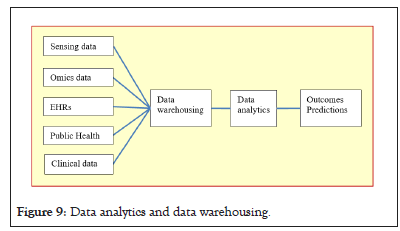
Figure 9: Data analytics and data warehousing.
Digitization of health data, healthcare data components maintained in digital format, for example, pharmacy prescription, clinical data, diagnostics, etc. Healthcare data analytics in personalized treatment internet of things, mobile computing, mobile health, different healthcare especially chronic diseases cancer, diabetics, services to implement, coordinate to improve health care patients and providers (Figure 10).
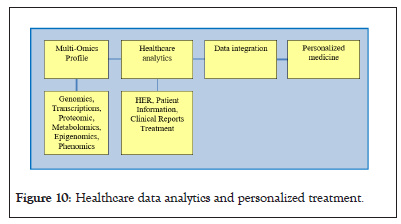
Figure 10: Healthcare data analytics and personalized treatment.
The Figure 10 describes the healthcare data analytics and personalized treatment; multi-omics profile with genomics data in healthcare analytics with data integration and suggest the personalized medicine to patients based on clinical reports.
Monitoring patient health
The scientific approach in healthcare sectors to diagnosis the patients, analyze the reports based on patient’s clinical information make the EMR records. Figure 11 describes the patient's health monitoring and treatment in the healthcare sector (Figure 11).
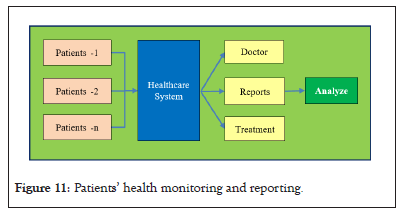
Figure 11: Patients’ health monitoring and reporting.
Patients diagnose the disease; the doctor will give the treatment based on clinical data and reports. The healthcare system provides the EMRs for future purposes. Goals are patient’s information, doctor prescriptions, reports, diagnosis, and treatment. Healthcare information system requires the data privacy and security, the doctors analyze the lifestyle of the patient, based on data analysis, suggest the treatment for diseases in early-stage to cure the diseases and better medicines. Electronic data scanned and maintained in the healthcare system to provide security and privacy of medical records. The stored information whenever it is necessary to retrieve the data and analyze the reports. Health data collected, stored, and analyzed using data mining methods. Clinical data, management high-quality Electronic Health Records (EHRs) by digitalization. Information is provided transparently and with accuracy. HER s data maintained at affordable cost in e-health care systems in servers (i.e., Cloud servers), which is available at any time anywhere. Hospital management registrations, diagnostics, clinical records, quality control, and policy management.
Family doctors to take the data whenever they required the latest EMRs whenever it is required for treatment of chronic diseases. Digitalization of health data use of smart mobile phones to record the live data with the use of sensors IoT Devices and recorded in the cloud server and communicated to e-healthcare system, to access and provide treatment.
Growing the user of personalized healthcare systems by low cost and increase the availability of data (i.e., clinical data, integrative analysis multi-data continue to improved understanding of cancer mechanism.
The rapid development of technology electronic health records has complex data information, useful medicine, big data; data science is applied for analytics and suggestions to improve the health of patient and preventive suggestions. Personalized medicine model in healthcare to maximize the effectiveness of patient treatment.
Genome is a unique and mostly invariant over time with a single nucleotide polymorphism, mutations (i.e., insertions or deletions, models), knowledge is the gene, expression, transcript, fusion, and spices. Proteomics is knowledge by protein, post-translation modification, protein-protein interactions, data, EHR, collection, of genomic data, includes environment, tissues, other types, and EHR monitoring data with high frequency. EHR has data collection, high dimensionality, heterogeneous data, EHRs, genome data, metabolic data, patient's profile, treatment, etc. Healthcare systems EHRs interconnection with other high network communicated National Healthcare systems for data exchange and functional operations for benefit of society to improve the health of patients.
Digitization of health data: Patient data is recorded in e-healthcare systems, the data large complex patient’s information, clinical data, health reports and provide visualization techniques and analyze the data for better decisions treatment, provide patients specific decisions.
Complete information of data of many patients, healthcare systems advantages are clinical data EHRs, identify the risk, management of health systems, decision support and treatment, suggest recommendations to improve health.
Data analysis helps the insurance agencies to analyze the health data and predict the risk of health policies over critical severe disease. For example, heart disease requires clinical diagnosis, identify the better treatment, suggest the diet and medicines will be based on the report.
Analysis of medical data into three types namely descriptive analysis which has patient’s information rules, information and format of data, predictive analysis with machine learning method, rules to forecast the future predictions based on present and past data clinical data, prescriptive analysis which actions type of questions like if clause, which follow the procedure model actions lead to best-predicted models where clinical data records EHRs scanned and stored digitally.
Structure of data capture identification of EHRs, associated with data and control for example radiology to measure MRI scan, X-ray, etc., pathology data examination of blood samples to detect the diseases. Sometimes microscopic examination is required to analyze the clinical data.
Clinical data EHRs, complex data monitoring, and integration of health data to various trusted organizations to mutual benefits for better healthcare systems. Privacy and security of data, the identified and connected information requires protection, and security is required. Mobilizing the data to trusted network systems: The healthcare data is stored and managed to provide coordination and integration, the collaboration of several trusted organizations (i.e., EHRs, diagnostics, MRI scan, prescriptions, genome profiles, family history, etc.) to minimize the risk of patients and better treatment and healthcare systems. Use of IoT, AI and machine learning technologies, tools, devices to record the patient's data, diagnose the data, parents' healthcare, projects and data information, bioinformatics systems.
Data is collected, stored, EHRs, in health care sectors, accurate management, the conditions of the procedure, treatment is based on the quality of data reports to better understanding, treatment, plan service, monitoring, safety, data security, privacy and provide web-based healthcare systems for service to patients at any time. Medical collaborations, detection, monitoring, assessment of pharmaceuticals, to provide web-based systems that manage the data and services. Types of use cases, disease preventive measures, lifestyle, early detection caused by illness, with smart mobile systems, management and monitoring of patients by physicians and doctors at any time in emergency critical conditions. To support research in bioinformatics, biology, pharmaceuticals, medicine, clinical investigations, etc. Projects to establish high-quality healthcare systems with government guidelines and policies to identify and diagnose treat the patients and preventive suggestions and recommendations.
Predictive analytics in health care
Best services for patients, healthcare organizations proposed various models help in hospital management. Best services for patients, healthcare organizations proposed various models help in hospital management. Healthcare provides electronic health records, maintains complex biomedical data. Genome technology, the huge amount of raw data, biochemical, EHRs data heterogeneous format. The main aims of omics discipline genomics; Study of all genes, for example, DNA epigenomics, all epigenomic modification of cell, metabolomics is the study of small-molecule compounds, interact omics is the study of physical interactions and also the indirect interactions. Pharmacogenomics, the study of pharmacology and genomics, the role of the genome of drug response. Diatomic, and also the study of all diseases, disorder reasons by genetics modifications. Data is the collection of data, data sources, data science improve patient service, and find spreading diseases in advance, monitor the quality of medical healthcare sectors provide better treatments. Data mining methods used to maintain EHR, data enable to identify, optimal guidelines in hospitals, scientific, new knowledge, and find the patterns. Monitoring the health data by EHRs, identify patterns.
Tracking and preventing diseases
Healthcare sector, AI techniques, physicians to make clinical decisions, treatment with the use of AI tools, medical investigations, to motivate the health care professionals to use of technical tools in medical treatment, AI system can minimize diagnostic, useful information from patient data, in real-time to make health risks and alert decisions and prediction. Healthcare data, generated in hospitals, screening, diagnosis, treatment, and so on, data is stored, retrieved, and make EHRs for future use.AI uses it to study clinical activities and improve accuracy in medical decisions. In diagnostic imaging, genetic, monitoring, screening etc.AI devices are used with machine learning.
Natural language target procedure, for clinical decisions, for example, cardiology, cancer, neurology to control the health monitoring and suggest the medicines. Figure 12 describes future health monitoring using AI. AI system, analyze, applications to analyze, diagnose, detected through, treatment, used to find early detection, treatment, outcome, and prognosis evaluation, diagnosis, treatment, and prediction improve clinical decision-making (Figure 12).
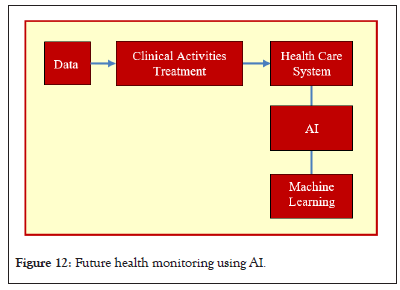
Figure 12: Future health monitoring using AI.
Electronic Health Records (EHRs), digitization of electronic records, for example, clinical trials, treatment, and biomedical research. The healthcare sector provides resources, and services to patients. Knowledge building applications, tools use by patients, clinicians, physicians, and other stakeholders. Big data standardize consolidated data, sharing the data, hospitals, for understanding the diseases, biological, cellular levels and establish infrastructure by establishing institutions, hospitals. Clinical, genomic data, social data, collected and stored, and analyzed. Biotechnological, advancements millions of genomic sequences, clinical data is available, collected from mobile apps, devices clinical tests, etc.
Collection (knowledge extraction), standardization, storage and analyzing data (machine learning, predictive analysis. Patient scan, health data, identify the treatment, and monitoring by healthcare tools such as healthcare applications data science, evidence-based medicine, monitoring health data, patient profiles and genomic analysis.
Molecular diagnostic testing is symptomatically increasing, allow the patients entire genome with improved resolution, detection large genomic, genome sequencing in transforming diagnosis, are important efficient screening, patients and families’ molecular diagnosis, healthcare, disease prognosis, and advanced futures. Patients genomic sequenced genome, informative tools, molecular diagnosis detect the variations that cause illness. Laboratory testing to identify the genome variant, causes for disease predictions, and consequences. Genetic testing is used to identify complex diseases; diagnostic testing used for inherited disorders, pre-symptomatic, complex disorders, and diseases. Healthcare providers use test, for individual patients, to find phenotype, family history, testing, and suggest according to health data clinical molecular diagnostic focused to identify patients, and genetic testing in the laboratory, comparisons DNA, and genetic conditions. Testing new technology well labs to find the diseases causing variants, and record the EMR in server. Polymerase Chain Reaction (PCR) mutation detection makes to find detect the variation, direct or indirect testing, specific PRC is used in COVID-19 virus, gene sequencing., clinical and high density, genome sequencing, clinical data diagnosis of many disorders. Predictive by large-scale genomic cost-effective tools and technologies, predictive pre-symptomatic testing finds the neurological disorders, cardiac, ophthalmologic, etc. detecting the structural variation. DNA is the most significant understanding role of genomic research and development. DNA will be transcribed into RNA response to external, internal environments, then adding methyl ground to DNA, mechanism of gene expressions (i.e., transcriptomics), DNA will be transcribed into RNA, RNA will be translated into amino acids sequences, this will produce entire complement of proteins. DNA genomes are not translated into amino acid sequences is not translated into amino acids.
DNA is genome transcriptomics are phenotypes which are state-specific, age-specific, and tissue-specific. Genetic environment origins of individual differ in, DNA Sequence, variations, all process genes, and behavior are important, phenotype. The DNA sequence is a causal class of sense, effects correlation between genes and behavior, DNA sequence, behavior, variance, correlation, behavior, and biology. Predictive ability enables genome research to prevent disorder, causes collateral damage, genomic-based diagnosis and treatment. Quantitative genetics to design for family studies, human contraction and extend genome environment, knowledge specific or environmental factors. Quantitative genetics, with molecular genetics, research DNA, in relation goal molecular genetics to identify, understand, genes mutations.
Clinical genomic sequencing, reliable interpretations variants, data that is in Electronic Medical Records (EMRs), the clinical observation data, and the data of biometric, the clinical decision in practice, genetic architecture, irrelevant phenotype contribute consequence of patients admitted to hospital. causes for disease variants. Genetic testing disease-causing, for example, disorder, disease-causing, sequence variant, disease cause sequence variation, report the results clinical significance. Interpreting the results molecular diagnostics, further laboratories, make decisions, clinical indications, and interpretation of labs prioritize variants of unknown significance. Variant interpretations, genetic testing and ethical considerations, genetic education, genomic science, clinic applications, professionally trained to provide the genetic services. Regulatory policy standards, cost, implementation, genetic testing, sequencing information, basic sciences, clinicians, and policymakers. understand the mutations, environmental, tools, genetic causality minimizing the risk based on clinical, genetic information, and treatment medicines in hospitals.
Understanding biomedical research, genetic structure in medical applications. Genetic data information, human genome variation, genetic variation, human genetic variation genetic, molecular related, DNA, computational analysis, medical research, collecting medical data, storing EMR records, Genetic variation, genes, one parent, Genetic variation, history, and discover new drugs. The technological advancements to use web based applications across the world for various applications like healthcare, data in social information systems data is generated and stored in the systems the data is structured, un-structured from multiple heterogeneous systems. Large data sources are called big data.
The new generation of huge data. (i.e., image, audios, text, etc.). Data analytics and, processing of applications in healthcare. The main big data into technical, performance, productivity, and cost-oriented data. Methods to store and analyze large complex data, where real-time data processing (for example prediction situations). Big data can be useful in various applications such as medical Health care systems to store the patient's data, discover genes, treatment, biology, and diagnosis and treatment of disease. Big data stored in for example Google, Facebook, etc. Big data used in real-time data processing systems, integration, and application domains. Big data analytics and visualizations retrieves the hidden information (for example health data) for decision making. Hadoop-based Network analysis. For example, healthcare insurance, healthcare medical data analytics, visualizations. Medical data handling includes data collection which means collecting from heterogeneous systems, data cleaning/acquisition which means identify uniform data processing from heterogeneous systems, data storage/transfer which means scalability issue, the storage model, web services to transfer the data, data analytics which is the most importantly useful for data consumers (for example researchers, patients, doctors, etc.) and consider the handling data by providing access with security as a data scientist to handle the medical healthcare data according to the applications for better providing healthcare solutions in hospitals and institutions.
Data is shared by business, public, health sectors. The data for example text, multimedia, video, audio, the data generated from machine to machine, social, sensor networks. Data generated a variety of sources, process, data acquisition and warehousing and management of data, information sharing, reports, etc. machines to communicate each other data networks, increasing availability of molecular biology, systems biology technology. Digitation of all medical records in standard hospitals. Digital information, improve technological solutions to deal with data. Big data is based on the management capabilities of the relational database. Big data has three v's, they are volume, variety, and velocity. Volume is defined as a storage scalability technique in distributed approach the variant of data source, relational structures, and velocity is the pattern the volume needs for web-related applications, the portal, user interface, optimized for precomputed information. Use of technology, relational databased. Big data, smart analysis is big data, processing the data sequencing genome data, encode, identify the functional elements, provide, analysis storing the future reuse. The storage, information, real knowledge and the biological systems are very complex in nature consequently, complex algorithms, analyze data, predictive, analytics capabilities. Understand the bioinformatics and technological view. Healthcare data applications data information is stored in the disk with hundreds of TBs, to access the data, analysis of big data needs to access information, architecture, big data system, for example, major vendors such as Oracle, Microsoft MySQL and DB2.
Store the data, managing and accessing big data, big data, managing, accessing data is by IT file system storage reliability solution, physical hard disk, apply parallelism for computations for the storage. High-level interaction, RAM, connection, LAN, data, data access, and computation. High-Performance Computing, High RAM, parallel computing, transfer data geographically distributed data, the world largest, genomic service provide BGI use FedEx analysis and big data with the use of client architecture, data accessed through the local network, file system, distributed file system, parallel file system cluster file system, director access. parallel systems, supercomputers, management analytics, storage characteristics, networks to move the data. Hadoop Distributed File System (HDFS) which is a java-based file system, will provide scalable, reliable data storage and design to span a large cluster of service providers. Input-output operations, large streaming, large sequential data, and efficient access. Two processes such as Name Service node/data node each node process the data. Name node storage, management of metadata. In middleware big data the architecture, framework, middleware specific solutions, parallel computing, message passing interface Apache Hadoop, framework, Hadoop main two components such as HDFS and MapReduce map is a process into sub-problems in distributed process, reduce is master collect the results and combine answers. Large HDFS, Amazon S3 file system, query, indexes, bioinformatics applications, MapReduce Computational Big data analysis. Big data with HIP clusters provide computational environment sciences to analyze the data. Cloud computing solution, bioinformatics applications. Cluster computing includes data analysis independent solutions, big data analysis high scalability data parallelism algorithms load balancing and finding the accuracy results' computing: HPC technology, data analysis, cost-effective solution, large clusters, use of powerful devices and applications running. GPUs, mainframes, workstations, high-performance computing, enhance model, microprocessor hardware developed by NVIDIA, AMD/ATI, intel M models with features, multiplatform data-parallel interface for heterogeneous computing, GPUS, accelerators, and other devices. high- speed processing functions, communicate and will increase the scaling to GPU cluster, the source of complexity and the latency, high-level performance provide portable across operating systems, CPUs, interfaces in data analyze. the performance of devices will depend on parallelization, optimization of processor and operations. optimization, distribution of computational load, improve the scalability and performance. Information technology bioinformatics in interdisciplinary nature, analysis computing using cloud-based environment, data storage, analysis bioinformatics. Hybrid solutions, cloud computing, analysis, virtualization enabling technology computing resources in the cloud, for example, Amazon Elastic Compute Cloud (EC2), bioinformatics and big data manipulation, high throughput molecular biology. Data connection, extraction, storage systems, the complexity of information, and available solutions to store the information in data warehouse. The development of biological information, the semantics of web standards, integration of biological information, research and development, big data, components integration of multiple sources. Ontologies is a valuation solution to support data integration provide formal representation, the thorough description of which features to represent, relations, and graph representation biomedical for example cancer.
The ontologies used annotation and integration of data biomedical informatics includes gene ontology, KEGG ontology (Kont) annotation of gene all organism, Brenda Tissue Ontology (BTO) gives the description of human tissues, cell ontology will provide organism, cell type, disease ontology, which find breast cancer data analysis medical, biomedical health-related information and also the protein structure classification, data is linked with server webpages using HTTP, URL web documents.
Data access and security includes big data research create, analyze, application in the organization provide data security for healthcare sectors, gateways, API development science, framework, the users enable interfaces, metadata management capabilities, web-based interfaces, for example, biomedical research, transfer and moving dataset, improve search capabilities using ontologies, data security access for healthcare sectors. Science gateway includes gateway complex data, flow management, framework, for example, science gateway used by N users in data management, requirement big data, API, data transfer, data sharing using science gateway interface. The biomedical application security, integrity, prevent loss of data, web services application.
Data science and genome applications are useful in the healthcare sector to treat the patients and preventive measures to be taken by patients. For example, SAR-Cov2 COVID-19, is an infectious disease, mild, moderate, and critical recovery need special treatment. It is spreading by cough or sneezes, spreading through the air, technical advancements, measurement of samples, collected by clinicians, where technology measure RNA, DNA, protein, and find the disease to access medical data. In real-time data present and past data to predict the future patterns. Data ownership, data sharing, physical infrastructure, clinical translations, individual patient disease finding and treatment, medicine is significant, realizing personalized medicine. Protein, DNA, RNA, book, or diseased tissue, clinical reports, risk, prediction of future consequences.
Biomarker approach, machine learning, data science, AI methods based on clinical data analysis predicting early detection of diseases suggest prescriptions, wearable sensors (wristwatches, devices) used to track the medical data continuous monitoring for the patient's comfort. Wearable technology devices advancements of medical continuous ECG, EEG, body temperature, blood pressure, etc. Next-generation forecasting prediction Artificial Intelligence (AI) multi-parameter measures in real-time enable early detection and the rapid invention of diseases, with wearable sensors systems, and monitoring. AI, ML, DL, DS innovations in radiology, pathology, genome, etc. For example, tumour detections, CT, MRI, Scan, etc. Federated learning, data governance, privacy, algorithm, federated learning has data governance, privacy, and algorithms used in medical healthcare solutions. Federated learning data inventions of medicines for diseases, safety, privacy. Health care sectors stakeholders, clinicians, patients, hospitals, practitioners, researchers, to develop AI solutions in healthcare. AI applications manufacturing, healthcare, the data is most useful, privacy, security, trusted communication networks, system architecture, computational systems, model and infrastructure is required. AI in healthcare automated solutions will improve the operations, services in hospitals to treat the patients. AI used banking, manufacturing, e-commerce, medical healthcare, medical science applications. Capable for performing AI automated interface in multidisciplinary science, medical field, patient, detection of diseases early stages, answer the questions related to drug, availability, cost and AI tools and mobile devices to improve workflow in hospital patients AI, clinical oriented AI, and administrative/operational AI. AI in the healthcare system on the development of solutions like technology, facial recognition, gene analysis, identification of diseases. Answer the questions related to drug, availability, cost, and AI tools and mobile devices to improve workflow in Hospital. Patients AI, clinical oriented AI, and administrative/operational AI is the healthcare system on the development of solutions like technology, facial recognition, gene analysis, identification of diseases.
[Crossref] [Google Scholar] [PubMed]
[Crossref] [Google Scholar] [PubMed]
[Crossref] [Google Scholar] [PubMed]
[Crossref] [Google Scholar] [PubMed]
[Crossref] [Google Scholar] [PubMed]
[Crossref] [Google Scholar] [PubMed]
[Crossref] [Google Scholar] [PubMed]
[Crossref] [Google Scholar] [PubMed]
[Crossref] [Google Scholar] [PubMed]
[Crossref]
[Crossref] [Google Scholar] [PubMed]
[Crossref] [Google Scholar] [PubMed]
[Crossref] [Google Scholar] [PubMed]
[Crossref] [Google Scholar] [PubMed]
[Crossref] [Google Scholar] [PubMed]
[Crossref] [Google Scholar] [PubMed]
[Crossref] [Google Scholar] [PubMed]
[Crossref] [Google Scholar] [PubMed]
[Crossref] [Google Scholar] [PubMed]
[Crossref] [Google Scholar] [PubMed]
[Crossref] [Google Scholar] [PubMed]
[Crossref] [Google Scholar] [PubMed]
Citation: Das MS, Govardhan A, Lakshmi DV, Kumar GR, Shirisha T (2023) Genomics and Data Science: Future Medical Science Applications. J Proteomics Bioinform.16:648
Received: 28-Aug-2023, Manuscript No. JPB-23-25828; Editor assigned: 31-Aug-2023, Pre QC No. JPB-23-25828 (PQ); Reviewed: 14-Sep-2023, QC No. JPB-23-25828; Revised: 21-Sep-2023, Manuscript No. JPB-23-25828 (R); Published: 29-Sep-2023 , DOI: 10.35248/0974-276X.23.16.648
Copyright: © 2023 Das MS, et al. This is an open-access article distributed under the terms of the Creative Commons Attribution License, which permits unrestricted use, distribution, and reproduction in any medium, provided the original author and source are credited.